Blog Post #3 Ongoing Field Observations
The organism I have decided to focus on for the field research project is the moss growing in my front yard amongst the grasses, dandelions, and clover. Due to the topography of my front yard, I have decided to break the yard up into 3 sections as shown in my field journal. These three sections form the most uniformly different elevations in the yard and different shade exposure along a gradient that moves through the yard from the road to the house. The elevation is higher closer to the road all the way parallel with it. However, the elevation decreases toward the middle of the yard with it flattening out roughly closer to the house. The only exception is where the elevation drops again in the lower right-hand corner of the yard as you move towards the side of the house opposite the drive way.
For the first three rough locations to take a closer look at the moss, I picked a spot in the middle of each section of the yard straight out from the middle of the house to the road. This provided different shade vs light exposure and elevations. I have a suspicion that either one or both of these abiotic factors may influence the distribution of the moss.
Field Journal Observations:
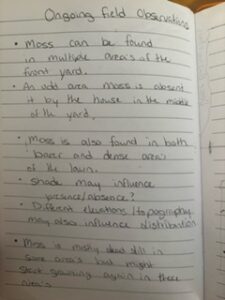
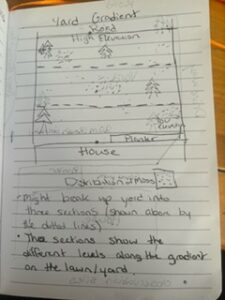
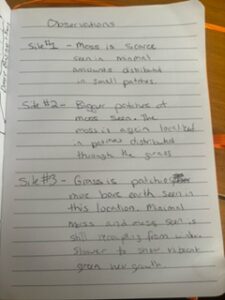
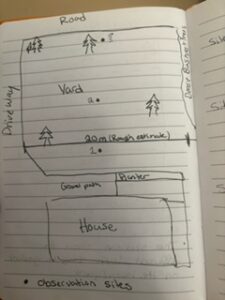
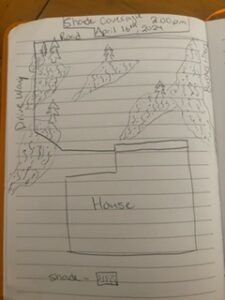
Both shade and elevation impact soil moisture and can therefore impact the absence/presence of moss in my front yard. Using this as the assumptions I am working off of a rough hypothesis for my study could initially be the following:
Hypothesis: Lawn moss grows better in lower elevations with greater shade coverage.
Prediction: The moss will be found in areas with higher soil moisture as that is affected by both elevation and shade.
Response Variable: Moss (Presence/Absence data is considered categorical)
Predictor Variable: Soil Moisture (depending on how I measure this it could be either categorical or continuous (ex. Soil color vs moisture %) I believe the easiest way to measure will most likely be a categorical variable)
Hi, this looks like a good start! Review the tutorial on hypothesis and perhaps consider rewording to something related to how elevation and shade influence moss growth.
For your variables, your whole post talks about elevation and shade and your hypothesis is related to shade but then your prediction is related to soil moisture. While I agree that lower slope positions and shadier areas tend to have higher soil moisture, there could be other factors. If you are using shade as a variable, you could do measurements of the amount of sunlight each of your areas receives. You could still measure soil moisture but if you want to focus on sun/shade then you will want to measure that as well.